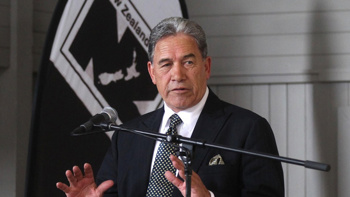
Some households and businesses will be challenged by rising interest rates and financial institutions should take a long-term view in supporting their customers, Reserve Bank governor Adrian Orr says.
The RBNZ this morning has released its latest six monthly report on the stability of New Zealand’s financial system.
Orr said the rising global interest rates needed to curb inflation would test New Zealand’s financial resilience.
“While our financial system as a whole is resilient, some households and businesses will be challenged by the rising interest rate environment.
“It is important that financial institutions take a long-term view when supporting customers and allocating credit to the wider economy.”
High inflation has led to central banks around the world lifting cash rates which has pushed interest rates higher at a very fast rate for borrowers.
Deputy governor Christian Hawkesby said there were increasing downside risks to the global economic outlook and despite New Zealand’s high level of employment it was not immune to the risks.
“Rising household debt servicing costs and declining household wealth will put pressure on domestic spending in the near term, but we are confident that the financial system is well placed to support the economy,” Hawkesby said.
“Banks’ capital and liquidity positions are strong, and our recent stress tests have demonstrated banks’ resilience to severe economic scenarios.”
He said financial institutions would need to continue investing in their systems, governance and risk management to build their long-term resilience.
Falling house prices
The report noted house prices in New Zealand continued to decline and had fallen 11 per cent from the November 2021 peak with Auckland prices down 15 per cent and Wellington declining 18 per cent.
While house sales had fallen to levels seen in the aftermath of the global financial crisis.
But despite the fall in house prices the RBNZ report said they remained above sustainable levels.
“A continued gradual decline in prices towards more sustainable levels remains desirable for long-term financial stability. However, a sharper or deeper decline remains a plausible outcome, given the strength of the run-up in prices over recent years, and the potential self-reinforcing effects from negative market sentiment.”
It warned the decline in house prices meant some borrowers who bought houses in 2021 were now in negative equity.
“Negative equity and mortgage servicing arrears are not widespread at present, but will grow if prices continue to fall and as mortgages reprice to higher interest rates.”
“Significantly higher unemployment would lead to further stresses among households, and is the biggest risk to financial stability at present.”
Around 2 per cent of mortgage lending was in negative equity as of September but that could rise to around 7 per cent if house prices were to fall a further 10 per cent. If house prices fell a further 30 per cent around 38 per cent of mortgage lending would be in negative equity.
Negative equity means the value of the house is less than the money owed on the mortgage.
“Negative equity among borrowers does not in itself lead to losses in the financial system. However, the default of a borrower who is in negative equity means the lender may not be able to recover the full value of their lending, for example through a mortgagee sale. A significant number of borrower defaults in an environment of widespread negative equity would lead to material financial losses for lenders.”
The report also warned that rising household debt servicing costs and falling household wealth would limit consumption growth over the next year.
Among households with mortgages, the average percentage of disposable income used to pay the loan was expected to rise from 9 per cent to 20 per cent.
“Repayment increases will be particularly significant for many households that first borrowed in the past two years.”
The number of households in financial difficulty was expected to grow as more fixed-rate mortgages repriced and could increase significantly if mortgage rates rose materially above 6 per cent - the serviceability test rate which banks applied during the pandemic period.
“The labour market continues to perform strongly, but a significant deterioration in labour market conditions would lead to household debt servicing stress.”
But lenders would likely provide relief by extending the loan terms or a temporary interest-only period.
Home building slow-down
The RBNZ also warned the outlook for residential development had deteriorated in recent months due to falling house prices, construction cost inflation, negative net migration and rising interest rates.
“The number of new houses being sold off the plans (pre-sales) has declined considerably. Since a high level of pre-sales is a prerequisite for obtaining finance from lenders, developers are potentially facing a substantial slowdown in activity once currently committed development pipelines are completed.”
The construction slowdown was expected to weigh on economic activity and employment.
“However, continued falls in land prices could help to restore the economic viability of future development projects, limiting the extent of the downturn in building activity.”
Business lending
Businesses continued to face a difficult operating environment but overall profitability remained healthy as most firms had been able to pass no increased costs to customers preserving profit margins.
“While interest servicing burdens will increase with the rising interest rate environment, the general deleveraging trends seen in most business sectors in recent years will lessen the strain this causes.”
This was particularly the case for the dairy sector where farmers had used high milk payouts to reduce debt.
Business lending had so far shown limited signs of financial stress although a slowing in the economy would lead to a fall in business income.
“Commercial property remains a sector where pandemic-induced changes to consumer behaviour are likely to persist, but these effects on rents and vacancy rates are likely to take some time to materialise as existing leases roll off.”
Banks had also been conservative in lending on commercial property in recent years which meant owners had sizeable buffers to handle increased debt servicing costs and a decline in property values.
Take your Radio, Podcasts and Music with you









